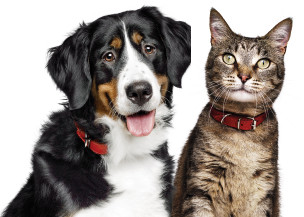There’s nothing quite as comforting as the soft, rhythmic sound of a cat purring on your lap. To many, it’s the universal sign of a happy and content feline. But did you know that purring is far more complex than just a signal of joy?
In this article, we’ll explore what science has uncovered about how and why cats purr—and what it might mean when your furry friend starts their soothing hum.
How Do Cats Purr?
The mechanics of purring are fascinating. Scientists believe that purring is produced by the rapid twitching of the laryngeal (voice box) muscles, combined with movement of the diaphragm. These muscles open and close the glottis (the space between the vocal cords), causing a vibration that creates the distinctive purring sound.
What’s even more remarkable? Cats can purr both while inhaling and exhaling, creating a continuous, rhythmic sound. This makes purring unique compared to other vocalizations.
Why Do Cats Purr?
Most of us associate purring with happiness—and that’s often true—but cats also purr in other situations. The science behind purring reveals several possible purposes:
1. Communication and Bonding
Kittens start purring at just a few days old, often while nursing. This helps them communicate with their mother and encourage her to keep caring for them. Adult cats may purr to signal safety, trust, or affection to other cats—or to you.
2. Self-Soothing and Healing
Cats often purr when they are stressed, in pain, or recovering from injury. Purring is thought to act as a self-healing mechanism. Research suggests that the frequencies of a cat’s purr (between 25 and 150 Hz) may stimulate bone healing, pain relief, and tissue regeneration.
That means your cat might be using purring the way humans use deep breathing or meditation—to calm themselves and promote recovery.
3. Stress or Discomfort
Interestingly, cats sometimes purr at the vet or when they’re frightened. This kind of purring may not mean they’re happy at all—it could be a coping strategy to stay calm under pressure.
4. Soliciting Food
Yes, cats even use purring to manipulate us! Some studies show that cats develop a special “solicitation purr” that includes higher-pitched sounds resembling a baby’s cry. This type of purring is often used to get attention or food from their humans—and it works
Do All Cats Purr?
Not all cats purr the same way, and some big cats—like lions and tigers—actually roar instead of purr continuously. Domestic cats, bobcats, cheetahs, and pumas can purr, but true purring (on both inhale and exhale) is mainly seen in smaller felines.
What Should You Do When Your Cat Purrs?
When your cat purrs, it’s usually a good idea to observe their body language. A relaxed posture and slow blinking likely indicate happiness. But if your cat is curled up tightly, hiding, or appears ill, the purring may signal discomfort, and it’s worth checking in with your vet.
Final Thoughts
Purring is one of nature’s sweetest mysteries. While it’s often a sign of joy and connection, it can also serve as a powerful tool for healing, communication, and even survival. The next time your cat curls up beside you and begins to purr, take a moment to appreciate the wonder behind that simple sound—it’s more than just a “happy noise”; it’s biology, emotion, and evolution all rolled into one.
